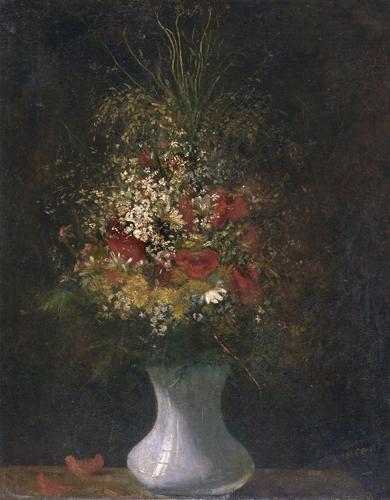What Price (Art) Education? van Gogh Imitator
I just recently heard yet another news story about a state (California) proposing to cut massive amounts of money to education (and you know art education is right up there at the top of the cut). Immediately following was a story about a deceased movie star’s jewels fetching over 100 million dollars at auction. Okay, am I the only one who sees the irony in this? 100 million for jewels from an actor, while cutting millions from education? Where are these jewel-buyers when education is on the line? And if those buyers are from foreign countries, shame on them, too, because we’re in a world-wide recession.
Unfortunately, it isn’t just 21st-century entitlement. Has valuing the acquisition of art with a “pedigree” over the educating children always been the norm? Could somebody spending 9 million dollars on a ring possibly think of donating that much money to a local school district? Or another more worthy cause? Please!
 |
| Imitator of Vincent van Gogh (1853–1890, Netherlands), Still Life with a Vase of Flowers, ca. 1900. Oil on canvas, 30 3/4" x 35 5/16" (78.1 x 64.3 cm). © Philadelphia Museum of Art. (PMA-3261) |
To illustrate this point, let’s look at the case of Vincent van Gogh. During his lifetime, van Gogh struggled with acceptance as an artist and for sales. He epitomized the artist who loved nature and expressed that through his paintings. He also epitomized the artist who struggled to get his art recognized, but ended his life feeling he was a failure. He only sold one painting during his lifetime.
The last year of his death, van Gogh became recognized in many countries of northern Europe. Within a couple of years of his death, imitators appeared copying his work. By the 1920s, copies of van Gogh’s work clouded the true number of legitimate works attributable to the artist. So, within 10 years of van Gogh’s death, people were making money from his style. (I’m sorry, but this doesn’t even look like an early van Gogh to me.) I think this is equally contemptible as people paying millions of dollars for Hollywood jewelry, no matter how beautifully it’s made.
As the income gap widens and people speak their minds about inequality, times such as these should help us reevaluate our priorities. Perhaps the “one percenters” of the world will finally see the value of quality education for all (and thus higher quality of life) over mere material possessions.

Comments